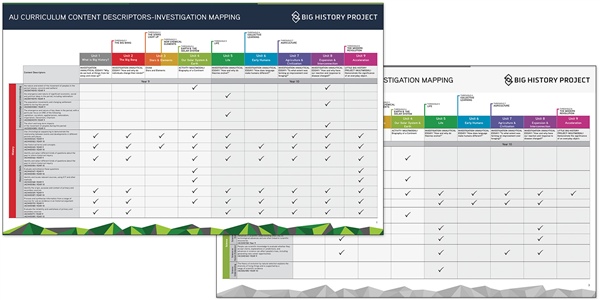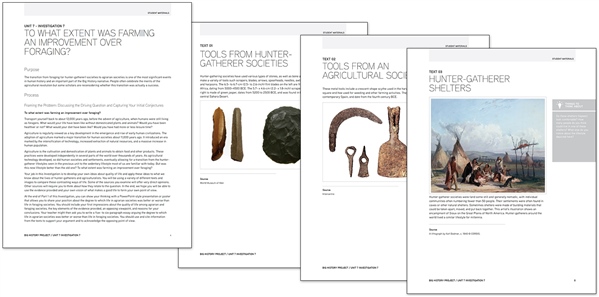By Kim Lochner, OER Project Teacher
Queensland, Australia
When I first started teaching BHP, I wasn’t sure how it would meld with the Australian Curriculum. I thought I could use bits, but would have to create my own assessment. I was pleasantly surprised to find the fully resourced writing Investigations aligned neatly with the Australian Curriculum, matching key elements of the humanities and science syllabi. I have been so impressed with the results. I’ve noticed a marked increase in critical thinking and writing skills for those students who take the BHP elective. They then go on to thrive in their humanities classes, as their skills in forming strong arguments, backed up by reliable evidence, are significantly enriched. I have mapped the BHP assessment to the Australian Curriculum in this document to improve criteria sheet layout and marking.

BHP is also my junior humanities secret weapon. I regularly use the articles, activities and videos in my year 7 through 10 humanities classes. Professor Nicholas Toth’s video, Making Stone Tools, in Unit 6, is a must-see for year 7 history students; the plate tectonics lessons in Unit 4 are very helpful for year 8 geography; and the Industrial Revolution resources in Unit 9 and those in the World History Project courses are engaging and student-friendly for year 9 history.

More than ever, we need students to think critically. The way the BHP lessons are structured provides students with the ability to see history from multiple perspectives and different narratives, and ability that helps them be critical thinkers and effective historians. My year 10 students particularly enjoyed the Unit 7 analytical Investigation topic, ‘To what extent was farming an improvement over foraging?’ This writing task includes a library of excerpts from 13 reliable sources. I then push my students to extend their research and find additional sources, to either corroborate or contradict key arguments. There were many lively discussions about which group was happier: foragers or farmers (the jury is still out on this one).

However, I have to say that my favorite part is the fact that someone else grades the drafts. Well, when I say ‘someone else,’ I mean a digital someone. All the Investigations are supported by Score, a digital program that gives instant feedback so students can measure the strength of their arguments and the structure of their writing. Of course, the actual Investigation content is written by real people. The right kind of real people—teachers—who know how to engage students and how to create online resources for busy classrooms. Similarly, a real person—you—should be the one to read and grade your students’ final drafts. Score is meant to help support your students in the writing process, to guide them to be more independent in their writing process and to provide you with data to inform your instruction. It can never replace the keen eye of a teacher!

Today, the demands on teachers are greater than ever. We have evolved from chalk and blackboards—let’s not reinvent the educational wheel with our daily planning. I use BHP because it is a one-stop-shop of engaging, relevant and highly useful teaching resources that perfectly complement the Australian Curriculum. As busy teachers we need to keep sharing links to valuable resources like these so we can work smarter, not harder.
About the author: Kim Lochner began teaching the Big History Project course in 2016. She teaches the course as a two-year elective during year 9/10, with students meeting twice a week for 70 minutes per class. She has taught modern history at Stanthorpe State High School since 2015. In 2021, she will teach Big History to an elective year 9 class of about 15 students.
Cover image: Underwater at Lady Elliot Island on the Great Barrier Reef, Queensland, © Colin Baker / Moment / Getty Images.
 For full access to all OER Project resources AND our amazing teacher community,
For full access to all OER Project resources AND our amazing teacher community, 
